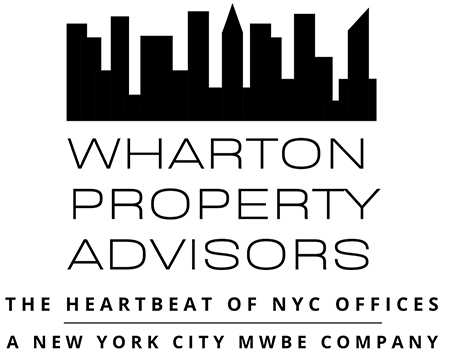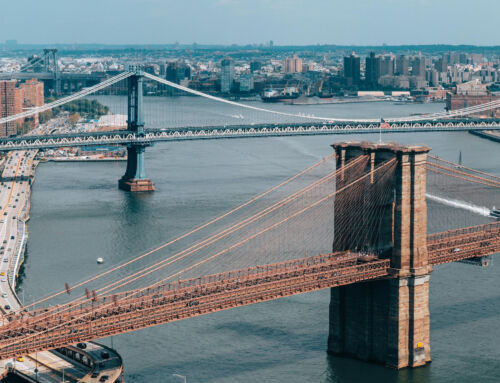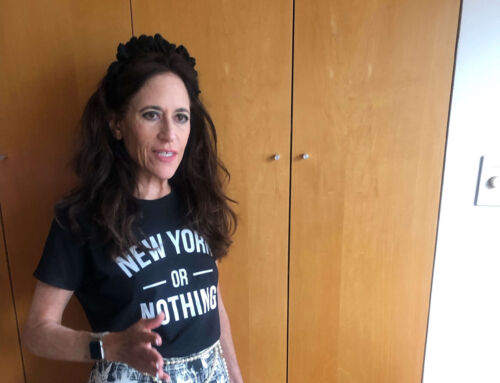While in Miami last week, I made sure to make time for an extensive tour of the downtown Brickell business district. One phrase I heard repeatedly from the locals is that they were trying to create a mini Manhattan on the shores of Biscayne Bay. However, unlike the conventional commentary from New York chauvinists like myself, I come not to bury Miami but to praise it. As with sports, we are going to have to beat them on the field, and not with trash talk which will only get you a technical foul but doesn’t accomplish anything.
You have to hand it to the Miami developers. From a somewhat blank canvas they have created a fascinating future world of steel and glass, which is architecturally interesting and integrates the natural environment. More specifically, with the downtown area they have created a mixed use of commercial, retail, and residential with a modern vibe, sort of Century City meets Hudson Yards, but in the middle of the city with a little monorail line running through it.
That is fine as far as it goes. But now office prices in Miami are getting expensive, with some even reaching close to $200 per square foot. Accordingly, the competitive advantage that Miami enjoyed is lost if the cost is the same as high-end New York space. And like New York, residential housing markets are at their all-time peak, straining employees’ budgets. Moreover, the Wall Street Journal reported on March 11 that “Miami’s exceptionalism appears to be fading” and its office boom seems to be slowing down with leasing down 25% in 2023 as compared to the prior year. In addition, One Brickell Centre which is the city’s largest office tower at 1000 feet high has been unable to locate an anchor tenant a year after groundbreaking.
One thing that Miami benefited from to propel its boom was luck. During Covid, NYC was essentially closed down for legitimate reasons as we mostly commute by mass transit, but that didn’t stop our competitors from swooping in to snag our businesses by driving home their lower-tax narrative which was not a new story but took hold during the pandemic. Indeed, Miami’s mayor is so business oriented he openly works for a developer part time. There is no state income tax in Florida, and state corporate tax rates are 5.5%. Compounding the problem, a recent Citizens Budget Commission survey found that the percentage of New Yorkers rating the quality of life here as excellent or good plummeted from 50% in 2017 to just 30% in 2023 so the pandemic was the perfect time for Miami to troll for transplants.
Given the challenges facing New York, it is extremely important for the city to try to lure new businesses and keep existing ones by making them feel comfortable. Just like with the subways, psychology is extremely important. If I have learned anything from decades in the office space business, it is that business people want to be courted.
Ever since the Amazon debacle, New York has been perceived as unfriendly to business. Now that the world is back open, that canard should be put to rest. Fortunately, we have a head start. New York already has some of the best, most talented business people on the planet. Further, they want to be here and they benefit from being in a community of like-minded people with whom they can share expertise and ideas. While most business people do not expect New York to significantly change its tax rates or social policies, what we do need to change is our attitude in order to make New York welcoming to business. For example, if we can have a czar to take on the proliferation of rats, why can’t we have an office leasing czar to deal with the competition which is eating our lunch down in Miami, Texas, Nashville et al.?
For starters, let’s focus on what we have the other cities do not – in other words, New York’s exceptionalism. New York should lean into its advantages of having world renowned museums and theater as well as every type of food, not to mention every professional sport known to man or woman that exists as well. Let’s also remember that the entire Miami office market is approximately 55 million square feet, and upscale Brickell is just approximately 7.5 million square feet. In contrast, the New York market is over 500 million square feet. This is all good, but it’s not enough for NYC to turn the corner without major improvements to then quality of life.
So what to do? Fortunately, the challenges are not as impossible to address as they seem. A new mini city was built in Hudson Yards, but there’s no need no need to recreate New York. We just need to make it more attractive. Here’s how in four very broad non-political strokes and my suggestion about how to pay for these ideas.
Step 1: Make the subways safe. I discussed that in my last blog, so no need to go into great detail about that again here.
Step 2: As a corollary to Step 1, make the city safer with additional police. Things are better than during the depths of Covid, but there is room for improvement. Further, some of the crime that occurs in New York arises out of the growth of the mentally ill on the city streets and subways. It will be expensive to set up the necessary treatment centers and facilities to assist those people. However, it is not only the humane thing to do, it is also the most sensible thing from a business standpoint so New York sheds the reputation as a chaotic and dangerous place (which by the way is not true).
Step 3: We need a national policy to deal with the immigration issue. We know what just happened in Congress, so the less said about that the better. However, there should be a national database of available jobs maintained by the Department of Homeland Security with new arrivals directed to places where there is a specific need for employees, and even better to places where particular skills of those individuals might be in demand.
Step 4: We need to build more residential housing, which will in turn will make the city more affordable so that we can attract the best employees.
All the above are necessary investments in New York’s future. Of course, I recognize that especially with the cost of supporting the new migrants, the city’s finances are in less than desirable condition and a $10 billion annual budget deficit is projected. This concern is compounded by the drop in real estate values, which in turn will reduce the tax base.
However, it is a crabbed and short-term vision to say that we don’t have the money to tackle these issues. If New York is to succeed in the long run, we have no choice but to do so. This will require substantial funding which can be provided by bond financing that will plug the temporary hole in the city’s coffers during the 5 to 10 years it will take to carry out this strategy. The good news is that this can be done conventionally by raising money in a similar fashion as we have always done to build tunnels, bridges, roads and the like.
The bonds can be issued by a newly-formed Revitalizing NYC Authority. And the good news is that there is an excellent precedent for this idea from almost 50 years ago in October 1975 when the city was on the verge of bankruptcy. Indeed, those of a certain vintage may recall the famous Daily News headline “Ford to City: Drop Dead” after the federal government refused to help the city avoid bankruptcy. As a result, the public-private Municipal Assistance Corporation was formed by New York State to issue bonds which bailed the city out of the jam, and every dollar of those bonds was repaid with interest. We will leave it to the Wall Street wizards to figure out the necessary pricing and interest rates of those bonds in the market (I was a bond trader in a former life, but real estate is more fun). This may require a referendum that will need to be better presented than the recent Proposition 1 in California to raise $6.4 billion to address their homeless problem (which is actually worse than ours on a per capita basis) that barely passed.
Most importantly, we can’t wait to get started and we can’t be discouraged by the inevitable deficit scolds. Pay them no mind, as the time for action is now to avoid the so-called “doom loop”. If we want to compete with the likes of Miami, a bold project to revitalize New York City is essential to secure our future. It’s time to get to work!
Thank you,
Ruth Colp-Haber




